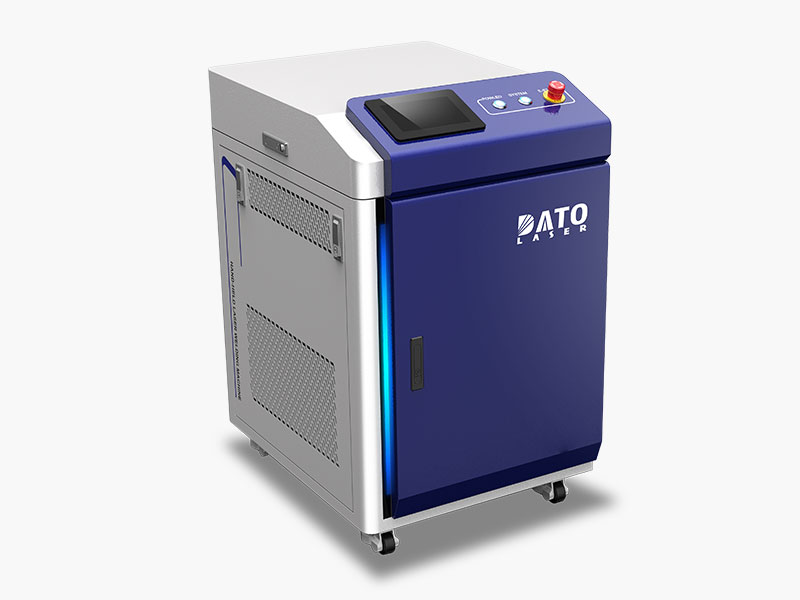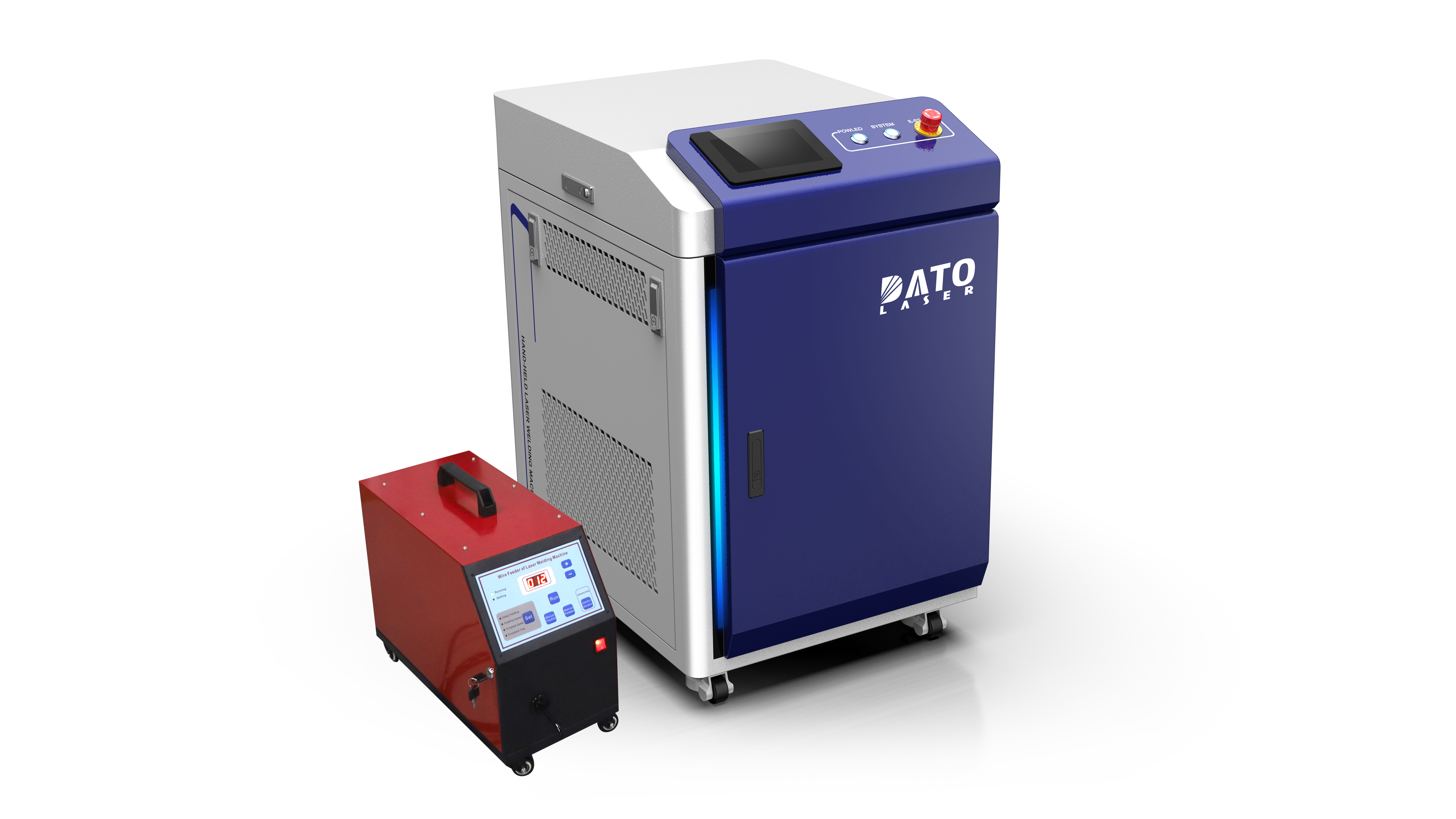Can Laser Welding Work Better With Welding Wire? The Truth About Modern Laser Welding

In modern manufacturing, laser welding with filler wire represents a significant advancement in welding technology. Adding welding wire enhances the process substantially, making it more versatile and reliable. The Dato DT-HJ Series laser welding systems optimize wire-fed laser welding for superior results across various applications.
Understanding Wire-Fed Laser Welding
The Advanced Technology
The DT-HJ Series combines precise laser energy with controlled wire feeding, creating a hybrid process that maximizes welding performance. This sophisticated approach ensures enhanced gap bridging capability, superior joint strength, improved weld quality, and greater process flexibility.
How It Works
Our advanced wire-fed laser welding process operates through synchronized wire feeding with laser power. The system maintains precise wire positioning control while managing optimized heat input and controlled material deposition for consistent results.
Benefits of Wire-Fed Laser Welding
Enhanced Joint Quality
Wire-fed laser welding produces exceptional joint characteristics through better gap tolerance management. The process delivers improved metallurgical properties and controlled chemistry, resulting in stronger weld joints that meet strict quality standards.
Production Efficiency
The DT-HJ Series achieves remarkable production efficiency through faster welding speeds and consistent results. The advanced wire feeding system minimizes rework requirements while maintaining high productivity levels throughout the manufacturing process.
Optimal Applications
Automotive Manufacturing
Wire-fed laser welding serves automotive manufacturing needs through body panel joining and frame assembly. The technology proves invaluable for powertrain components and structural elements requiring precise, strong welds.
Heavy Industry
Industrial applications benefit from wire-fed laser welding machine in steel fabrication and pipeline construction. The technology excels in heavy equipment manufacturing and structural steel work, delivering reliable results in demanding conditions.
Wire Selection and Management
Wire Types
The DT-HJ Series works seamlessly with solid wire, flux-cored wire, metal-cored wire, and specialty alloy wire. This versatility ensures manufacturers can select the ideal wire type for their specific application requirements.
Feed System Technology
Advanced wire feeding technology ensures precise speed control and automatic wire positioning. The system provides real-time adjustments and synchronized operation for optimal welding performance.
Process Parameters
Critical Settings
Successful wire-fed laser welding depends on carefully controlled wire feed speed, laser power, travel speed, and wire position. The DT-HJ Series maintains these parameters within precise specifications throughout the welding process.
Automation Features
Modern automation features include automated parameter adjustment and comprehensive process monitoring. The system incorporates quality control measures and data logging capabilities for complete process documentation.

Economic Advantages
Cost Efficiency
Wire-fed laser welding demonstrates significant cost benefits through reduced material waste and lower labor costs. The technology delivers improved quality rates while maintaining higher production speeds than conventional methods.
Material Savings
Smart wire usage optimization results in controlled material consumption and minimal spatter. The precise control system ensures optimal material deposition for each application.
Quality Assurance
Monitoring Systems
Advanced quality assurance includes real-time process monitoring and automated inspection systems. The technology verifies parameters continuously while maintaining detailed quality documentation.
Quality Features
The DT-HJ Series incorporates sophisticated wire position sensors and process cameras. Temperature monitoring and defect detection systems ensure consistent weld quality.
Implementation Support
Training Programs
Dato provides operator certification and process optimization training. The comprehensive program covers maintenance procedures and troubleshooting skills for maximum system effectiveness.
Technical Assistance
Professional support includes application development and process optimization services. Regular maintenance programs and emergency support ensure continuous operation.
Industry-Specific Solutions
Manufacturing Sectors
The technology serves diverse industries including automotive, aerospace, heavy equipment, and general fabrication. Each sector benefits from customized welding solutions meeting specific requirements.
Custom Applications
Specialized configurations address unique material combinations and complex geometries. The system adapts to high-speed production needs while maintaining precision requirements.
Making the Right Choice
Selection Guidance
Expert consultation helps determine appropriate wire types and optimal process parameters. The guidance includes system configuration recommendations and automation level selection.
ROI Analysis
Professional evaluation considers production requirements and cost considerations. The analysis includes quality expectations and future scalability options.
Ready to explore how wire-fed laser welding can transform your production? Contact Dato today to learn how our DT-HJ Series can deliver superior welding results with optimized wire feeding technology.
Related Blogs
-
 Exploring the Safety, Precision, and Industrial Benefits of Laser Surface CleaningIn today’s fast-paced industrial world, where quality, efficiency, and sustainability are top priorities, manufacturers are constantly seeking better ways to clean metal surfaces without compromising material integrityBlog
Exploring the Safety, Precision, and Industrial Benefits of Laser Surface CleaningIn today’s fast-paced industrial world, where quality, efficiency, and sustainability are top priorities, manufacturers are constantly seeking better ways to clean metal surfaces without compromising material integrityBlog -
 A Complete Guide by DATO and LeapionIn modern industry, surface preparation and maintenance play a crucial role in achieving high-quality manufacturing results. Laser cleaning machines have emerged as one of the most innovative, efficient, and environmentally friendly tools for removing contaminantsBlog
A Complete Guide by DATO and LeapionIn modern industry, surface preparation and maintenance play a crucial role in achieving high-quality manufacturing results. Laser cleaning machines have emerged as one of the most innovative, efficient, and environmentally friendly tools for removing contaminantsBlog -
 Laser cleaning machines are revolutionizing industrial surface cleaning by offering a faster, safer, and more eco-friendly alternative to traditional methods. Whether removing rust, paint, oil, oxide, or other surface contaminants, laser cleaning has become a cutting-edge solution in manufacturing,Blog
Laser cleaning machines are revolutionizing industrial surface cleaning by offering a faster, safer, and more eco-friendly alternative to traditional methods. Whether removing rust, paint, oil, oxide, or other surface contaminants, laser cleaning has become a cutting-edge solution in manufacturing,Blog -
 Introduction: Transforming EV Battery Manufacturing Through Laser TechnologyThe electric vehicle revolution has accelerated dramatically over the past decade, bringing with it unprecedented challenges and opportunities in battery manufacturing. As global automakers commit billions to electrificationBlog
Introduction: Transforming EV Battery Manufacturing Through Laser TechnologyThe electric vehicle revolution has accelerated dramatically over the past decade, bringing with it unprecedented challenges and opportunities in battery manufacturing. As global automakers commit billions to electrificationBlog














